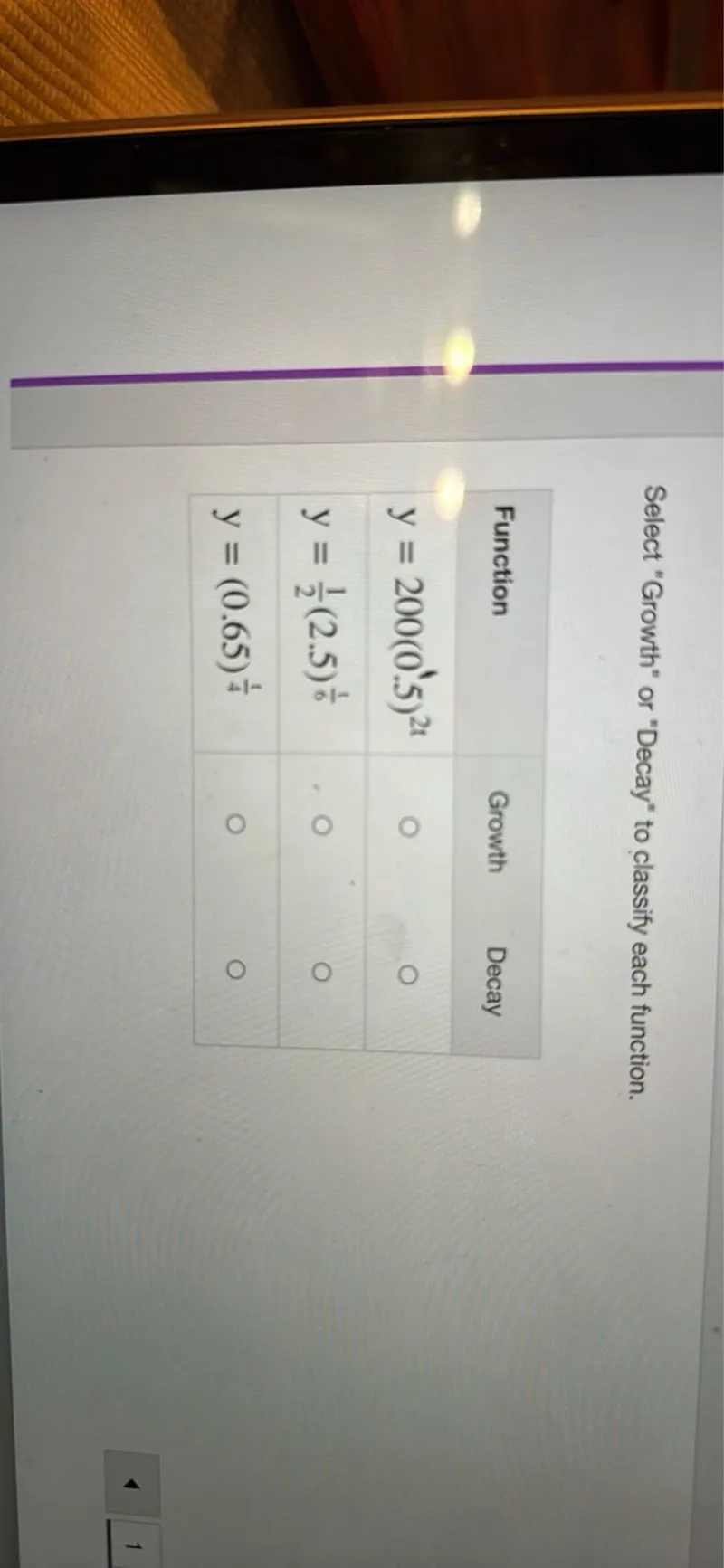Classify the function \( y = 200(0.5)^{2t} \) as "Growth" or "Decay."
Identify the base of the exponential function.
The base of the exponential function is \( 0.5 \).
Determine if the base is greater than or less than 1.
Since \( 0.5 < 1 \), the function represents exponential decay.
\\(\boxed{\text{Decay}}\\)
Classify the function \( y = \frac{1}{2}(2.5)^{\frac{1}{6}} \) as "Growth" or "Decay."
Identify the base of the exponential function.
The base of the exponential function is \( 2.5 \).
Determine if the base is greater than or less than 1.
Since \( 2.5 > 1 \), the function represents exponential growth.
\\(\boxed{\text{Growth}}\\)
Classify the function \( y = (0.65)^{\frac{1}{4}} \) as "Growth" or "Decay."
Identify the base of the exponential function.
The base of the exponential function is \( 0.65 \).
Determine if the base is greater than or less than 1.
Since \( 0.65 < 1 \), the function represents exponential decay.
\\(\boxed{\text{Decay}}\\)
\\(\boxed{\text{Decay}}\\)
\\(\boxed{\text{Growth}}\\)
\\(\boxed{\text{Decay}}\\)






